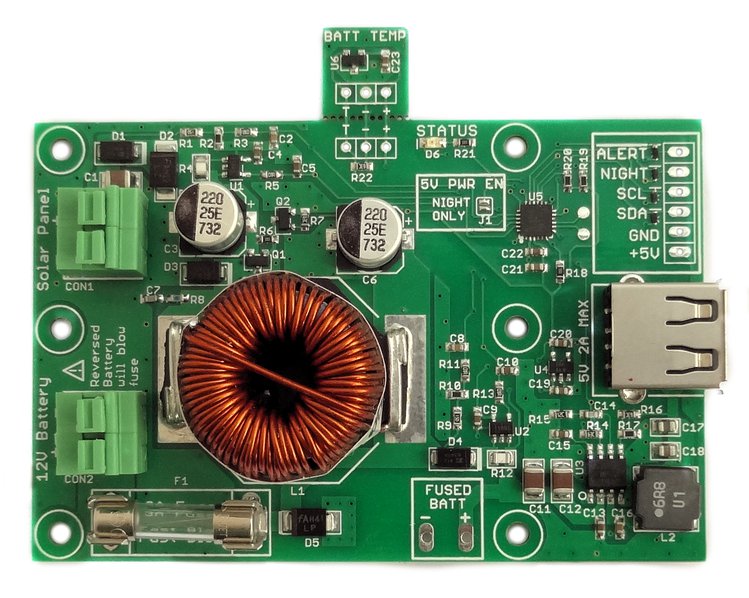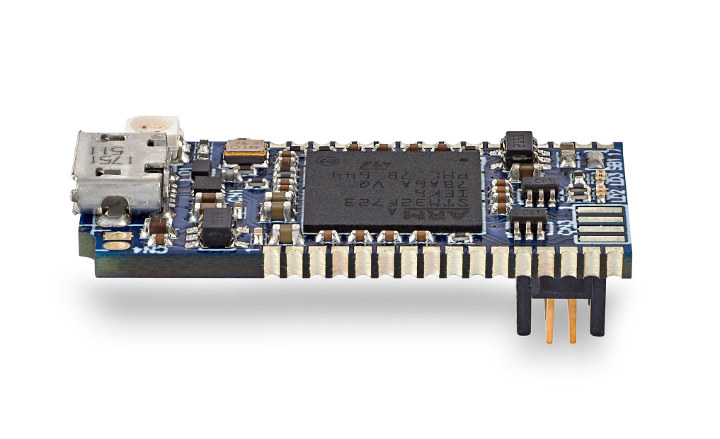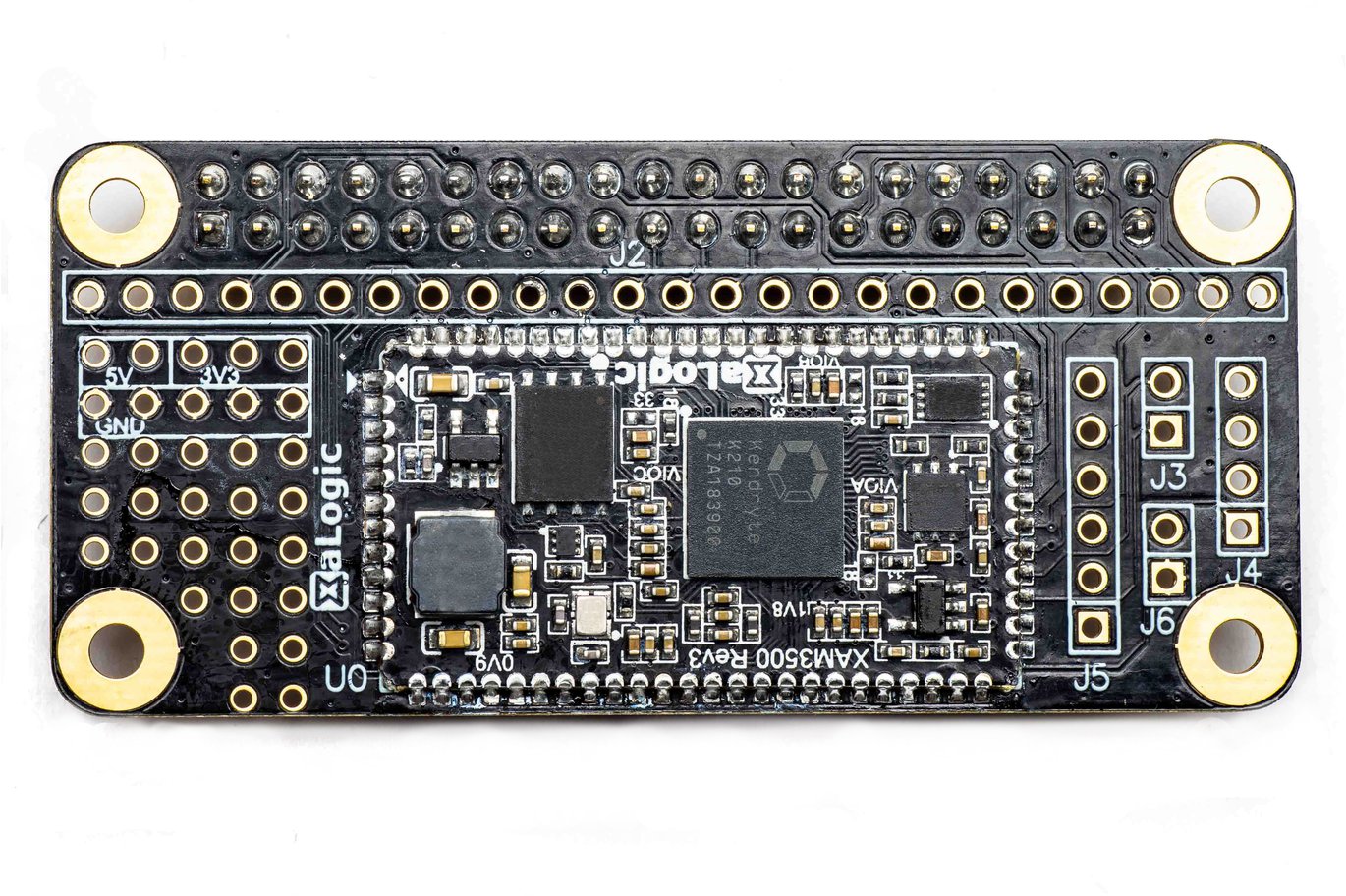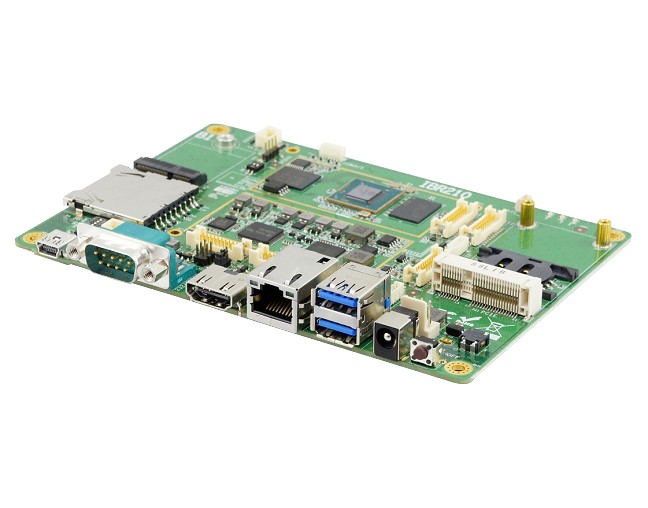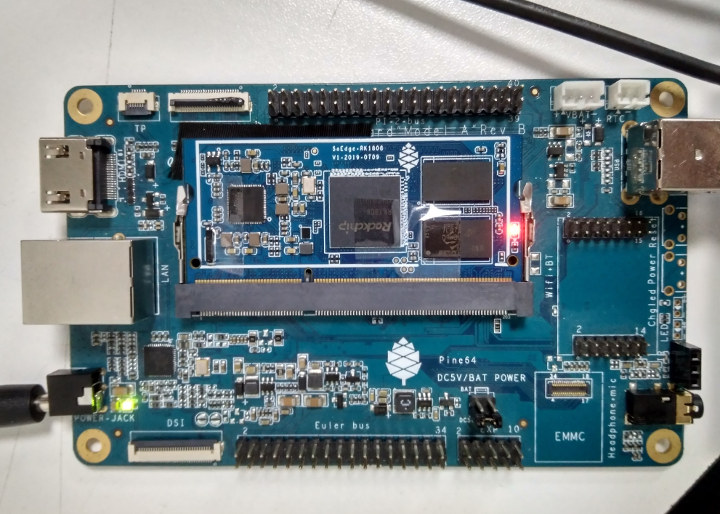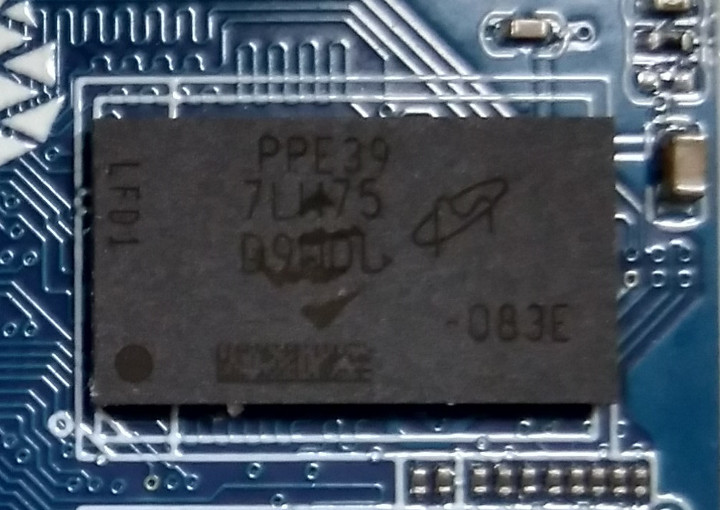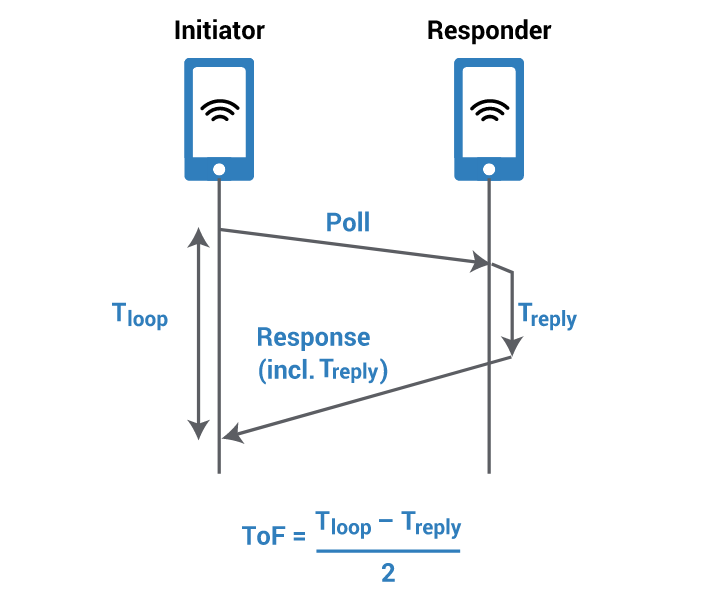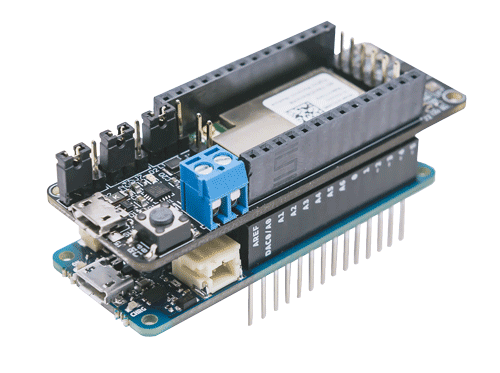Danjuliodesigns llc. A boutique embedded systems design firm run by engineer and inventor Dan Julio has set up crowdfunding for the makerPower Solar power supply/charger for intelligent power supply just about anywhere and in any climate. A comprehensive device structured to IoT and embedded systems, where sometimes a remote camera or other device needs power all the time. The power source is a solar panel which can charge a standard lead-acid battery (USA availability only) We reported on a solar input board PiJuice battery HAT and although there are other solar input devices on the market, such as the PiJuice, for use with SBC’s such as Raspberry Pi, the makerPower Solar functions at a higher level, incorporating intelligent power control and functioning. The board can be source powered by solar panel through a standard lead-acid battery, rather than a Li-Po or Li-Ion. The inventor felt a source should carry as […]
STMicro Launches $10 STLINK-V3mini Mini Probe for STM32 MCUs
Last year, we reported STMicroelectronics launched STLink-V3 debugger & programmer for STM8 & STM32 microcontrollers that added I2C, SPI, and CAN interfaces compared the previous STLink-V2 model. It’s not particularly expensive either at $35, but if you ever wanted something more compact and cheaper, the company has now introduced STLink-V3mini debugger going for under $10. STLINK-V3Mini key features and specifications: JTAG / serial wire debugging (SWD) specific features: 3 V to 3.6 V application voltage support and 5 V tolerant inputs JTAG communication support SWD and serial wire viewer (SWV) communication support Virtual COM port (VCP) specific features: 3 V to 3.6 V application voltage support on the UART interface and 5 V tolerant inputs VCP frequency up to 15 MHz USB – Micro USB 2.0 connector for power and connection to host computer Misc – 2x color LEDs: communication, power; STDC14 signals protection Dimensions – 30 x 15 mm […]
A Compact Machine Learning Accelerator HAT for your Raspberry Pi
AI for the Edge has been a promising playing field where several players are pushing for. Cloud computing has made it possible to train complex machine learning models for various application, although this seems to be working fine, the performance or the possibility of deploying AI applications on the Edge is enormous. AI on the Edge is expected to help reduces the latency involved in the roundtrip to the cloud, saves the bandwidth and cloud storage costs for enterprises, deploy ML models faster, and build robust, intelligent applications. Generally, Edge devices like the Raspberry Pi, Arduinos, and other embedded boards usually can’t run powerful AI applications. They have limited resources and computing power. Fortunately, this is changing with the introduction of AI Accelerators; modern processors that help assist the edge devices by taking over the complex mathematical calculations needed for running AI models. One of such AI accelerator processor is […]
IBase IBR210 i.MX 8M SBC Targets Multi-Display Digital Signage
The latest release from IBase is a single board computer that seems to be designed for the mass business markets, especially in signage. The IBR210 is a 3.5-inch (147 x 102 mm) low-power multimedia SBC based on the NPX ARM Cortex-A53/Cortex-M4 i.MX 8M processor that comes in either a dual or quad-core running in the 1.3 GHz to 1.5 GHz frequency range. The unit was announced on August 1, 2019, but as of yet there is no pricing information. The GPU is a Vivante GC7000Lite/GC7000VLX, and an integrated Cortex-M4F real-time core, in the i.MX8M. Although for the i.MX8M Mini is a faster and newer SoC, the i.MX8M supports 4K video and HDR. The system runs Android 9 or Yocto v2.5 Linux, with up to 3GB soldered LPDDR4 and up to 64GB eMMC. The video output supports 4K via HDMI 2.0, while there are 2 USB 3.0 ports. The board supports […]
Pine64 SoEdge-RK1808 AI Module Delivers 3.0 TOPS via Rockchip RK1808 SoC
A few weeks ago, Ameridroid reported Pine64 would soon launch SoRock and SoEdge systems-on-module, but at the time there was virtually no info except SoRock would be likely based on either RK3328 or RK3399 and work on the existing Clusterboard, while SoEdge would be an AI Neural module for Artificial Intelligence tasks, with up to 3 TeraFLOPS of performance. I did not write about it at the time, simply because there was so little information, but this morning I’ve just received some photos of SoEdge-RK1808 module fitted to a baseboard that looks to be SOPINE Model “A” carrier board. SoEdge-RK1808 SoM Let’s try to derive the specifications from the photos even though some components appear to be blurred out or just unclear: SoC – Rockchip RK1808 dual-core Cortex-A35 processor with 3.0 TOPS NPU (Neural Processing Unit) System Memory – 2GB RAM (2x 8GBit Micro DDR4-2400) but limited PC-2133 Storage – […]
How to Decode Markings on FBGA Memory Chips
SDRAM chips often come in compact FBGA (Fine-Pitch Ball Grid Array) packages, which do not leave enough space to write the full part number. So instead component manufacturers rely on abbreviated part markings that often have nothing to do with the actual part numbers. For example, the Micron SDRAM chip above has markings that read “PPE39 7LW75 D9WDL”. We know it’s a Micron part because of the logo, but if you search any on the number on the chip, you won’t find anything on the web. Instead, you need to look for the marking decoder from the chip company. Micron calls it the FBGA and Component Marking Decoder. Usually we need to use the second number on the chip, but in that case, it did not work, and I had to use the third number. I got my answer. Somehow the company does not link to any product page. Searching […]
FiRa Consortium Ultra Wide-Band Ecosystem To Deliver Precise Indoor Positioning
The FiRa Consortium has just been established by the ASSA ABLOY Group which includes HID Global, and NXP Semiconductors, Samsung Electronics, and Bosch, and joined by Sony Imaging Products & Solutions Inc, LitePoint and the Telecommunications Technology Association (TTA) in order to grow the Ultra-Wideband (UWB) ecosystem providing accurate positioning for a variety of mobile and consumer applications. The FiRa stands for “Fine Ranging”, and UWB technology relies on the IEEE 802.15.4z standard that provides real-time centimeter accuracy indoor positioning. The consortium claims “UWB technology outperforms other technologies in terms of accuracy, power consumption, robustness in RF connection, and security, by a wide margin”, especially in challenging environments. The main roles of the FiRa Consortium will be to develop an interoperability standard, and promote the development of UWB applications. Some of the use cases include: Seamless Access Control – UWB can identify an individual’s approach toward or away from a […]
UnaMKR Sigfox Monarch Development Kit Follows Arduino MKR Form Factor
Unabiz is an IoT network operator with offices in Singapore and Taiwan. The company offers Sigfox networks in the region, and last year unveiled UnaMKR, a Sigfox Monarch development kit compatible with the tiny Arduino MKR boards. We’ve already written about Sigfox LPWAN standard several times, but what is Sigfox Monarch exactly? Answer direct from Sigfox website: The Monarch feature makes IoT devices aware of the local radio configuration (RC) to use. A single device can thus lawfully communicate on the Sigfox network even when moving between countries with different radio regulations. That means a Sigfox Monarch compliant end-point can work legally anywhere in the world switching to 868 MHz, 902 MHz, and 920 MHz frequencies automatically depending on the country of operation. This is useful for asset tracking across countries and continents. Back to the board itself, with UnaMKR specifications: Platform – Arduino or STMicro Connectivity Lite-On WSG309S Sigfox […]


